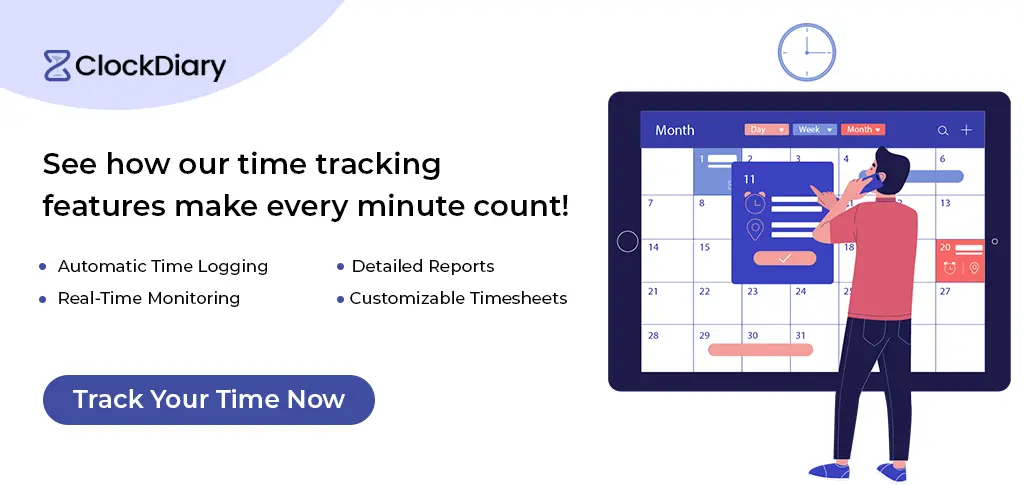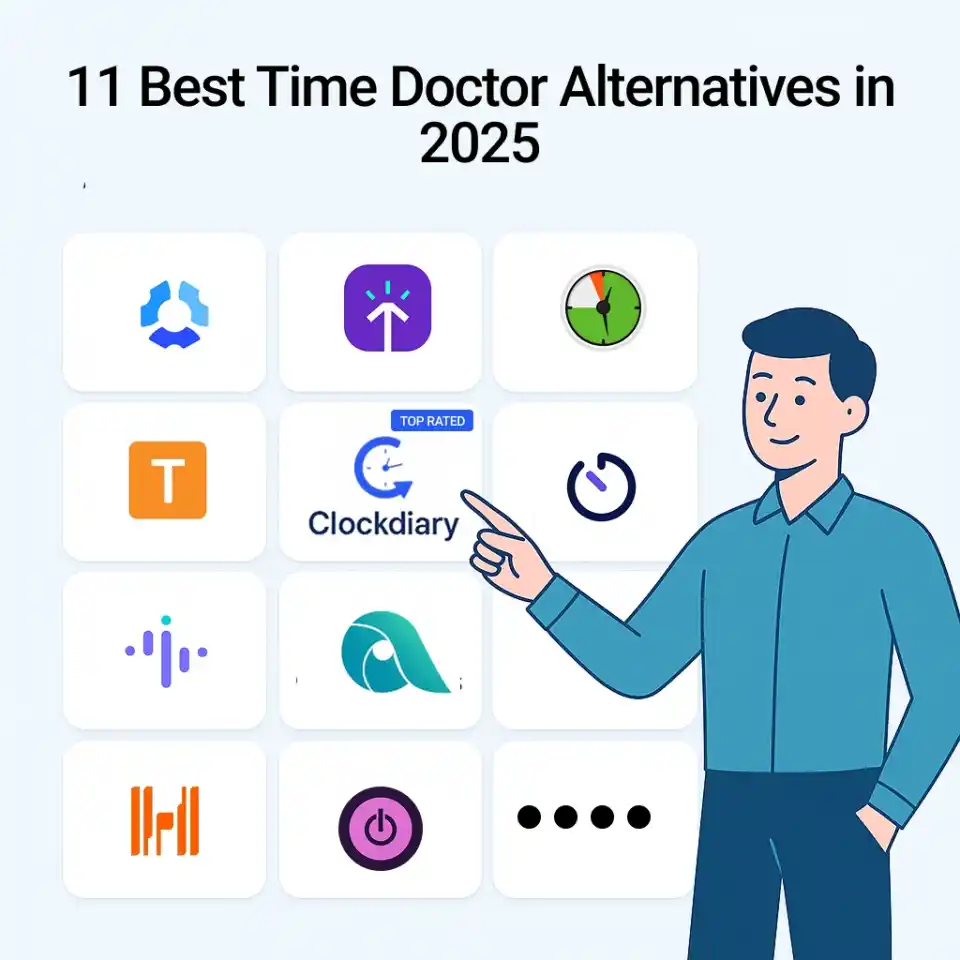In today’s fast-paced and busy world, time management is of paramount importance. Whether you are an entrepreneur, freelancer, or someone looking to boost their productivity, a time tracker is a precious tool that can bring an all-new dimension to the way you manage your time.
Here, we will look at what is meant by time-tracking, software used for Time Tracking, the essential features of Tracking software, the benefits one can get from tracking time management, the standard methods used, and how to choose the Right Time Tracking Software. So, let’s start.
What Is Time Tracking?
Time tracking is typically a systematic process for recording and analyzing how time is spent in a company. It’s not just about clocking in and clocking out. Rather it’s about getting an insight into what employees are up to during their working hours. This insight comes in handy to pay hourly staff or freelancers or craft accurate client invoices.
This process is extremely important for businesses of different genres, be it construction, software development, digital agencies, or landscaping.
Time tracking streamlines payment and invoicing. This is one of the main reasons why remote and in-office teams, along with field-based businesses embrace them the most.
What is a Time tracker?
Time tracker is a tool that allows growing and large-scale organizations to track the number of hours the employees work, their clock-in and clock-out times, and the amount of time they invest in various tasks and projects.
Different time tracker are available on the market. However, you need to watch out for certain things that will help you choose the ideal time-tracking system for your organization. But what are they? Well, the next section throws light on just that.
Before moving on, we would like to point out that our supremely engineered software for tracking time has already been implemented by 41 businesses in the US for their daily operations. Most of the users have almost the same saying, that this tool has helped them immensely in improving employee productivity, while ensuring work-life balance, at the same time. Isn’t that amazing?
Important Features of a Time tracker
It goes without saying with different platforms, the level of functionality will also vary to a great extent. However, when you are weighing your options, some of the common features that you will find in almost all real-time tracking software include:
1. Clock In And Clock Out:
Time tracker allow users to clock in and clock out of their shift. It accurately records their start and finish times at work, along with location and mandatory breaks.
2. Time Tracking:
This is the prime feature of any time-tracking software, allowing users to track the time they invest in different projects and tasks.
3. Overtime Tracking:
Since this software offers a clock-in and clock-out feature, any overtime that employees are working can be accurately recorded. This can then be used for any time off in lieu (TOIL) or payroll purposes.
5. Reporting:
Software for tracking time often includes reporting features, thereby allowing workers to generate reports on their time usage and productivity.
6.Invoicing:
Some professionals bill clients on the basis of time. Good software must include invoicing features that simplify the billing process.
7. Project Management:
The Important features like task assignment and progress tracking are also a must in such software.
8. Integration:
A good time tracker must be able to integrate itself with various other tools and platforms so that it can be easily incorporated into your existing workflow. It should be able to sync seamlessly with communication platforms, invoicing software, and project management tools.
Benefits of a Time Tracker
Numerous benefits can be reaped by implementing time tracking in a business that extends across several operational aspects. These advantages not just streamline management practices but also boost the overall productivity of employees. But what are the benefits? Well, here goes.
- Enhancing Business Profitability: Time management allows businesses to check exactly where money is spent, making it effortless to adjust projects for improved profitability. This, in turn, leads to smarter spending and increased savings.
- Ascertaining Accurate Billing And Payroll: With time tracking, companies can bill clients accurately for the work executed. This, in turn, ensures employees are paid fairly for their invested time.
- Setting Clear Objectives for Team: Time analysis helps employees understand their tasks better, This ensures all remain focused and determined towards clear, shared goals. Such clarity helps eliminate confusion and improves focus.
- Boosting Overall Workplace Productivity: When businesses monitor tasks with the help of time tracker, they can identify where time is wasted. Thus, they can make necessary adjustments that would lead to improved productivity and more efficient work days.
- Improving Efficiency in Project Management: Time management gives you valuable insights into how long tasks take to complete. This can help you plan and prioritize future projects more efficiently and allocate team resources effectively.
- Promoting Transparency in Team Operations: By implementing time tracking, you actually foster openness in team activities. You get a clear picture of how everyone spends their time. This goes a long way in evaluating workloads and performance more accurately. This transparency helps in making informed decisions about team operations while building an air of trust as well.
- Improving Team Communication And Progress Updates: If employees can track their time, they can better communicate their ability to meet deadlines. This would allow the team to adjust the workload efficiently.
Commonly Used Time Tracking Methods
Accurately tracking employee time is extremely important for businesses to improve productivity, simplify the payroll process, and maintain accountability. Several time management methods have been in use for quite some time now. Let’s take a look at them:
- Paper Timesheets or Spreadsheets: Spreadsheets or conventional paper timesheets are one of the oldest and most straightforward methods of time tracking. In this method, workers manually record the amount of time they worked, breaks, and any overtime, on a weekly or daily basis. This method can be effortlessly implemented, and is inexpensive, making it the one to go for small organizations or businesses with a limited budget.
- Swipe Card Systems: If you are looking for a more automated approach to tracking time, swipe card systems might just be the one for you. In this method, individuals are issued swipe cards which they use to clock in and clock out at the beginning and end of their shifts. Compared to manual timesheets, swipe card systems provide more tamper-proof and accurate reports. They can also be integrated with payroll systems, thereby reducing administrative workload.
- Time Tracer: The flexibility and exquisite features of time tracker make it the talk of the town in the US. One can install these applications on computers and mobile devices, thereby allowing employees to log their hours electronically. Also, you benefit from additional functionalities, like productivity analysis, project management, and integration with payroll software.
- Geofencing System: Geofencing systems employ GPS technology to track working hours and employee locations. These systems are a boon for businesses with remote or field-based workers, such as delivery or construction services. Geofencing automatically records the time when an employee enters or leaves a designated area. This ensures accurate tracking without manual input.



